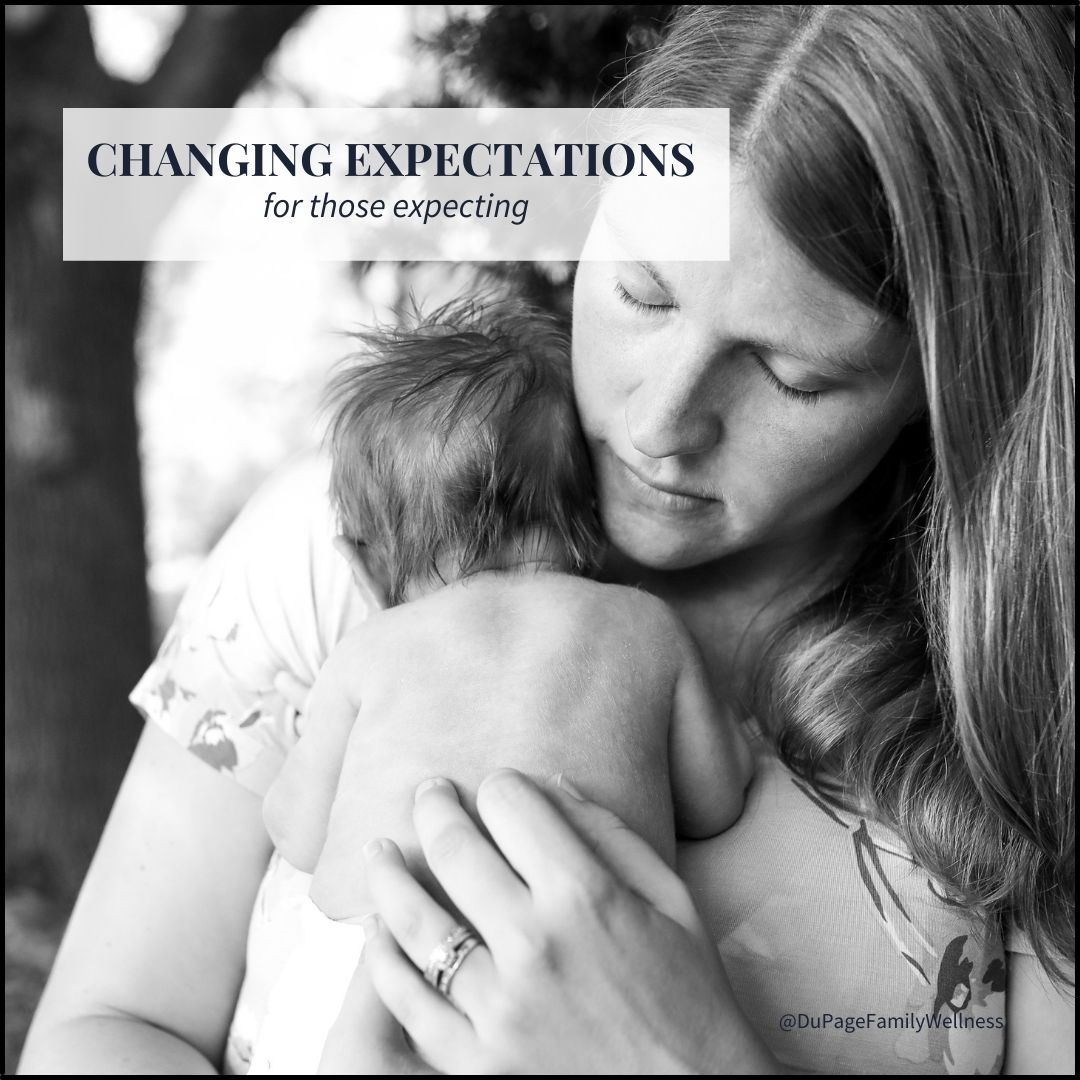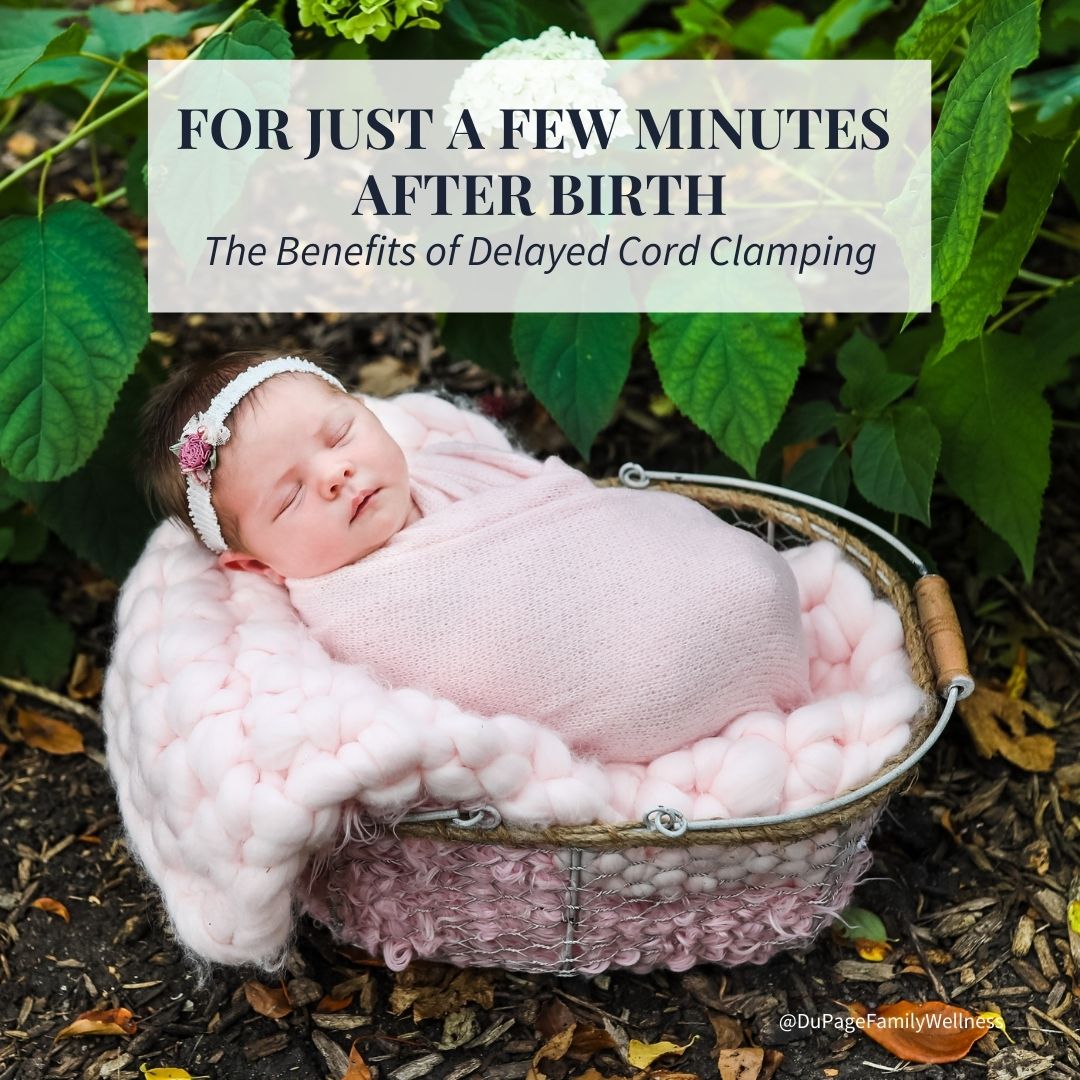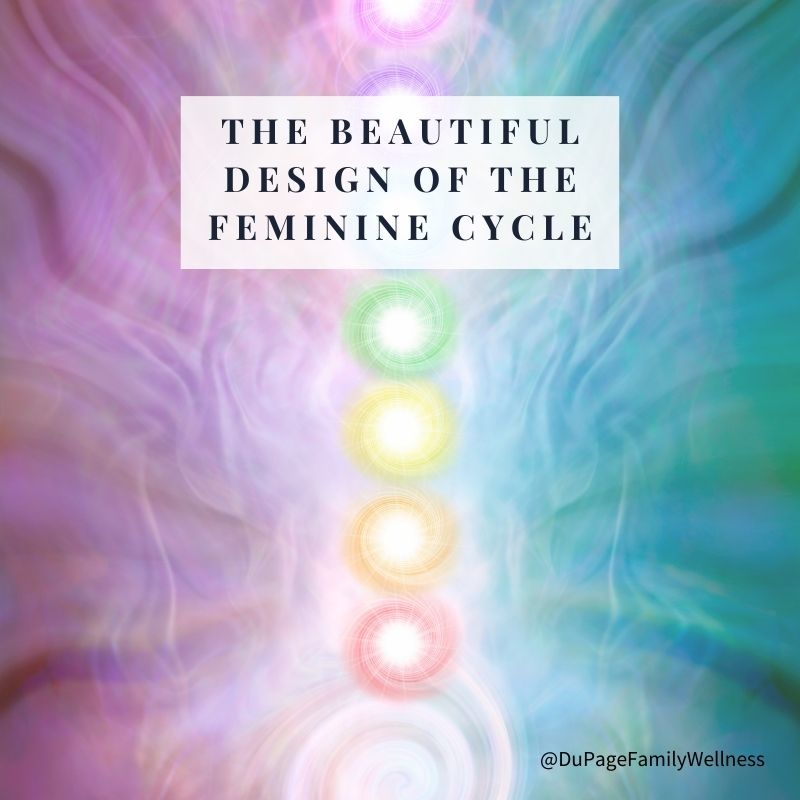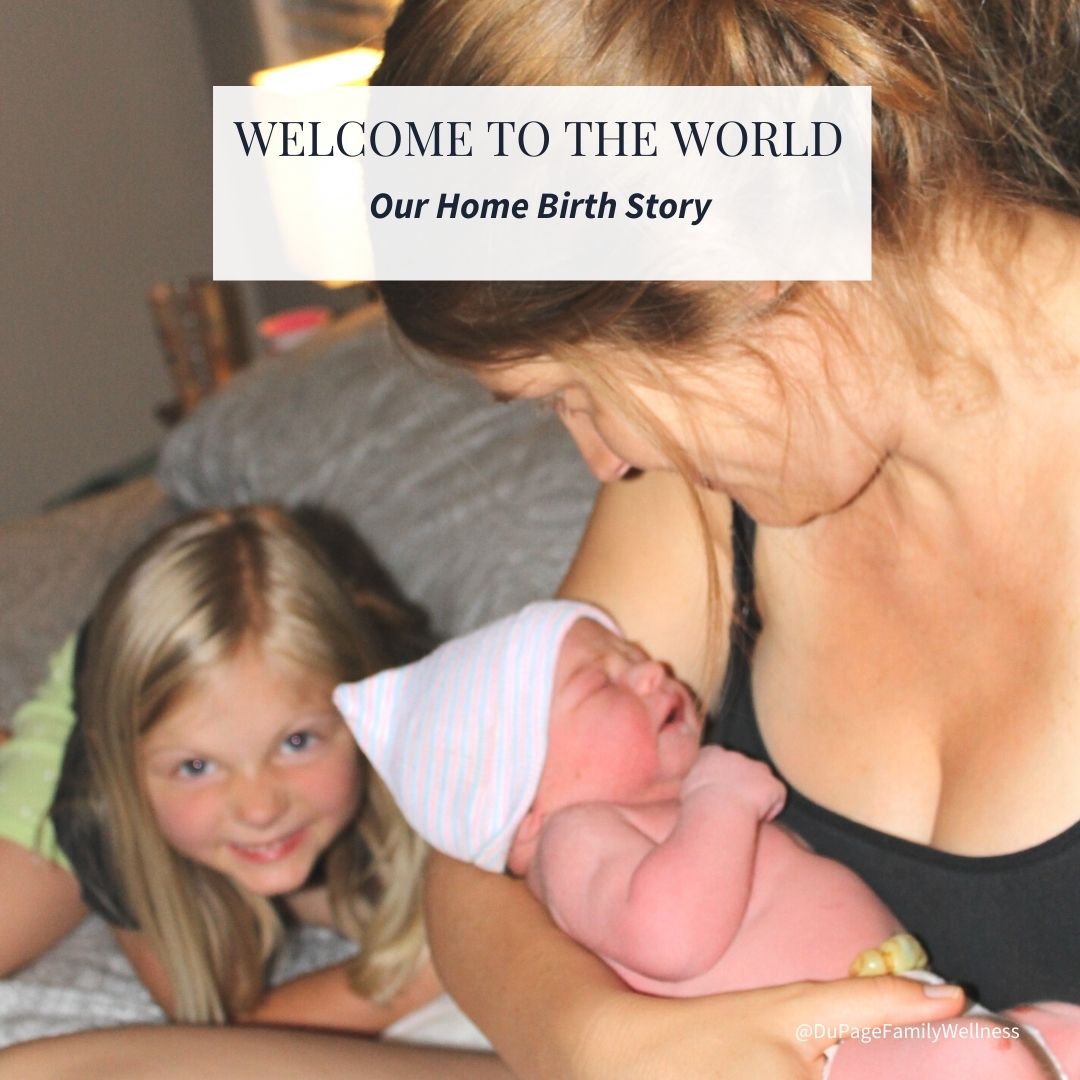Your Care During My Maternity Leave
 Jared and I will welcome our fourth girl into the world soon! My maternity leave is planned to begin October 18th and go through the end of November. If I baby and I are feeling up for it, I might pop in for a few appointments during the month of November. If this becomes available, we will reach out and let our patients know.
Jared and I will welcome our fourth girl into the world soon! My maternity leave is planned to begin October 18th and go through the end of November. If I baby and I are feeling up for it, I might pop in for a few appointments during the month of November. If this becomes available, we will reach out and let our patients know.
While I am on maternity leave, I want you to have access to great chiropractic care! Below you will find information on three chiropractors who will take good care of you, but first, let's have a little fun...
Birth Stories
Here are some statements about my previous births. Let's see if you can tell which are true/false (see the answers below).
- Baths helped ease the intensity of my contractions
- One of my labors lasted about 43 hours.
- I got an epidural and Pitocin for one birth.
- One baby was born in the car on I-88.
- The midwife went to the wrong address for my home birth
- Hypnobirthing meditation was a useful tool.
- The doctor used forceps at one delivery.
- Jared got to cut each girl's umbilical cord.
- One baby was delivered about five minutes after my midwife got there.
- My girls were able to meet their sister minutes after my last delivery.
Dr. Matthew Petry (Plainfield)
Dr. Anita Dickerson (St. Charles)
Dr. Gabriela Ludeman (Bolingbrook & Naperville)
Gifts You Can't Wrap & They Won't Forget
 In the hustle and bustle of the season, could there be a way to skip the stores and still get a Christmas gift they will love? No, I’m not talking about online shopping! I’m talking about giving those you love an experience.
In the hustle and bustle of the season, could there be a way to skip the stores and still get a Christmas gift they will love? No, I’m not talking about online shopping! I’m talking about giving those you love an experience.
In our family, some of the most cherished gifts are things you can’t wrap under the tree. Since most of us don’t need more material goods, we enjoy giving experiences which make memories that last!
One of my favorite gifts from my parents was a family membership to the Naperville Children's Museum for our family. Talk about a gift that keeps on giving! We thought of them every time we went there all year.
When you give an experience as a gift, the key is finding something they will enjoy that fits in your budget. It could be something super simple like a date with you to a local coffee shop, or it could be a little more elaborate.
Let’s look at some ideas for experiences that our loved ones may enjoy!
Changing Expectations for those Expecting
 Pregnant moms get all sorts of questions. Is this your first? When are you due? Is it a boy or a girl? These questions are born out of excitement and anticipation, but some of these questions are not as straightforward as you may think.
Pregnant moms get all sorts of questions. Is this your first? When are you due? Is it a boy or a girl? These questions are born out of excitement and anticipation, but some of these questions are not as straightforward as you may think.
Consider the question, “When are you due?” While there may be a prescribed due date, what does that mean? Can we really predict with accuracy when the baby will be born?
There are so many factors that come into play. So, how much weight should we give these dates? And are there better methods of predicting a due date?
Let’s look at the history of how due dates are calculated and consider if our ideas about due dates are really accurate.
History
In the 1700’s, Hermann Boerhaave developed a method to calculate an estimated due date by studying the records of 100 pregnant women. He determined that adding 7 days from the last period and then adding nine months would result in an estimated due date. But Boerhaave never clarified whether this formula should use the first or last day of the woman’s period.
In the 1800’s Carl Naegele expanded Boerhaave’s thoughts, but he did not specify if the formula was based on the first or last date of the mother’s period either
For years doctors used the last day of the last period to calculate due dates. But by the 1900’s it became the standard to calculate it from the first day of the last period. Today this calculation is called “Naegele’s Rule.”
For Just a Few Minutes After Birth: The Benefits of Delayed Cord Clamping
 The moments after birth are amazing. You finally get to meet the precious little life that your body has brought into the world. In spite of the exhaustion from the intensity of labor and delivery, holding your baby in your arms for the first time makes it all worth it!
The moments after birth are amazing. You finally get to meet the precious little life that your body has brought into the world. In spite of the exhaustion from the intensity of labor and delivery, holding your baby in your arms for the first time makes it all worth it!
Ideally, these moments will provide mom and baby time together to bond. This may include skin to skin contact and the beginning of the nursing relationship. It is an exciting time for dad and other loved ones as well, as they can now become more involved with the baby’s care.
As the baby adjusts to the world outside of the womb, it is important to honor this transition. One way we can honor the transition is through delayed cord clamping, which allows the baby to receive all the benefits available from the umbilical cord and placenta.
The Umbilical Cord & Placenta
Many people give little thought to the incredible jobs of the umbilical cord and placenta, but they are such crucial roles in the well being of the baby. They work together to provide functions that the baby is not yet able to do one their own.
The umbilical cord is the direct connection between mom and baby, throughout the pregnancy. A vein in the umbilical cord brings nutrient-rich oxygenated blood from the placenta to the baby, while two arteries take carbon dioxide and other waste from the baby to be purified in the placenta.
Cutting the Cord
Since the early 1960’s, it has been standard for doctors to cut the cord seconds after birth.
This is done by clamping the cord in two places and cutting it in between. A small part of the cord remains attached to the baby’s belly button until it dries up and falls off a couple weeks after the birth.
It was thought that early clamping would prevent postpartum hemorrhaging in the mother. This belief has since been disproved, but this practice has remained common even today despite evidence that delayed cord clamping may be really beneficial to the baby.
The Beautiful Design of the Feminine Cycle

It’s not often that women talk about their menstrual cycle in a positive light. There is often a negative connotation about periods as well as the emotional and physical sensations that are often experienced throughout the cycle.
But when you understand the complicated dance of hormones that’s going on in your body, it’s actually quite amazing and gives you some really important information. I encourage all women to be empowered by understanding their cycle. They can use that information not only to know if they are fertile, but as a sign of health. Let’s take a step back and look at the amazing design of the female body!
What to Expect During Your Period
An average flow for a period will measure around 50ml or 3T over the course of 2-7 days. Anything under 25ml is considered a scanty flow, while over 80ml is considered an excessive flow. (You can estimate your flow knowing that regular pads/tampons hold about 5ml, while super pads/tampons may hold up to 10ml.)
Blood becomes darker when it is exposed to air, so a more rapid flow will produce a brighter red color. As the flow slows down towards the end of the period the flow may become more brownish-red in color.
Since your period is the shedding of the lining of your uterine wall, tissue from the lining of your uterus may be noticed along with the blood. You should see a mostly liquid flow, but a few small clots (up to the size of a dime) is nothing to be alarmed about.
Listening to Your Period
Good normal predictable periods are signs of health. When things are off with them, it is important to pay attention. Listening to what our bodies are telling us through our periods can give us valuable information.
For example, spotting prior to your bleed likely means that your progesterone isn't high enough. And while painful cramps aren’t uncommon, they aren’t normal either and can be a sign of excessive inflammation. These things aren’t necessarily a big deal, but should be noticed.
Our cycle is influenced by what was going on in our lives 3-4 months ago. Sometimes stressful events will give us a funky period. But if your cycle persists in being irregular, let’s talk about it. There are many things that can be done to encourage a healthy cycle and period.
Welcome to the World: Our Homebirth Story
 A Trip to the Farmers Market, a Nap, a Bath, & a Walk
A Trip to the Farmers Market, a Nap, a Bath, & a Walk
Saturday morning began as any other morning, except that I was 11 days past my due date. I had only ever gone 5 and 6 days past my due date with the other babies, so this was uncharted territory.
We decided to go to the Farmer's market so we could get out of the house for a little bit. I had been having Braxton Hicks contractions with activity for days, so the slight contractions I was having that morning were nothing new.
Calling the Midwife
More Articles ...
- Black Mamas Matter: What Maternal Health Outcomes Reveal About Racial Inequality
- Trimester Zero: Planning for a Wedding vs. Planning to Conceive
- How Well-meaning Parents Interfere With a Baby's Development
- The Webster Technique for an Easier Birth
- A Baby in the Car?! Piper's Birth Story
- The Webster Technique
- Treating Cold and Flu Symptoms
- Well Adjusted Babies: Using Chiropractic for Constipation
- Introducing Harper Rose Thomure!
- Pregnancy Series Part 4- Decreasing Back Pain
- Pregnancy Series Part 3- How to Avoid Annoying Skin Conditions like Stretch Marks, Dry skin, and Breakouts
- Pregnancy Series Part 2: Pregnancy and Digestion
- Pregnancy Series Part 1: 6 Tips to Get Pregnant Naturally


